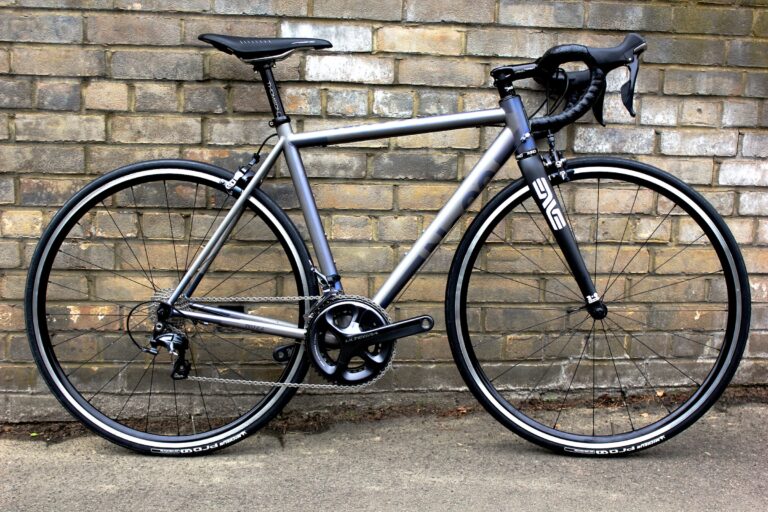SRAM have released two high-end groupsets this year, and the newly-released model year 2014 bikes will be the first cohort to feature them en masse.
We brought you a ‘first ride’ report on the latest iteration of the American brand’s top-tier RED 22 groupset, and its hydraulic disc brakes, from the Eurobike show in Germany.
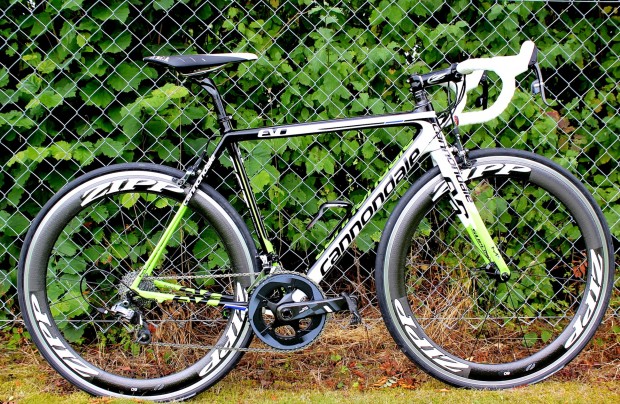
While at the show, we also seized the opportunity for an admittedly brief, two-hour test of the second-from-top Force 22 group.
We’ll begin a long-term test on the group next month. The version due to arrive at RCUK Towers will boast hydraulic rim brakes (Mark Cavendish used the top-tier RED 22 versions at the Tour de France). Here, we’ll report on the conventional, cable-operated version, and what we consider the key components from SRAM Force 22.
As the name suggests, it’s an 11-speed system with many of the features of its top-tier cousin. Viewed purely in terms of weight, the two groupsets are separated by 160 grams.
The volume of model year 2014 bikes we saw at Eurobike equipped with SRAM Force 22, suggests the American brand’s second-tier, 11-speed group may be making in-roads against the hegemony of the dominant player in this market sector: Shimano’s Ultegra 6800 groupset.
Chainset
The chainset is arguably the most aesthetically appealing feature of the Force 22 groupset. The deep carbon arms are the same dimensions as its RED 22 cousin. The 88 gram weight advantage enjoyed by RED 22 (the BB30 option from SRAM’s top-tier offering weighs a claimed 609 grams; the Force 697 grams) is accounted for largely by the hollow crank arms – a technology known to SRAM as Exogram.

From our limited experience of both (one ride on RED 22 during a test of the Lapierre Xelius 800 EFI; one on Force 22 on our Eurobike ride) we’d say the savings in pounds outweigh those in grams.
Front mech
The ‘yaw’ facility of the front mech was the most widely trumpeted feature of SRAM RED 2012, and it’s trickled down to this year’s ‘22’ iteration of Force. The simplicity of the concept is matched by the efficiency of operation. A pivot in its central axis allows the mech to remain aligned with the chain rather than with the chainring. The upshot? Chain rub is eliminated in any and every ratio; especially valuable, now SRAM has moved Force to 11 speed.
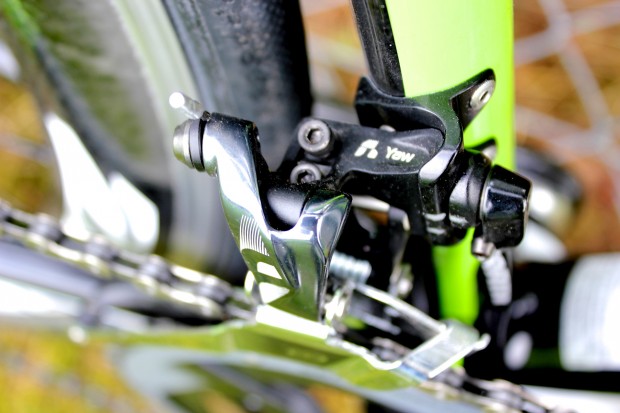
Our test ride was conducted on a machine equipped with a standard 53-39 chainset and an 11-26 block, and we experienced no chain rub. SRAM make the same claim when used with their Wi-Fli ratios: 11-32 and 12-32 cassettes.
Brakeset
Our SRAM Force 22 groupset will include hydraulic rim brakes, but our Fredrichshafen machine was equipped with standard mechanical offerings. Hydraulics have dominated the brake ‘conversation’, whether it be rim or disc, for what feels like an eternity so it’s perhaps worth flagging up here that modern cable-operated rim brakes offer a highly efficient stopping mechanism.
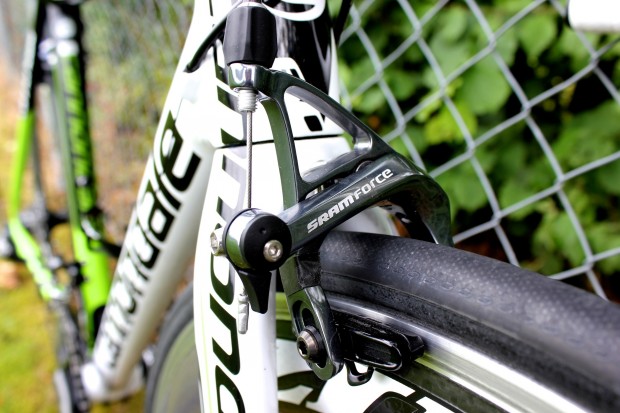
The Force 22 caliper is a dual pivot unit, on which the angle of the arm has been raised to offer more progressive braking – a response to criticism that the stopping power offered by its predecessor had been “on-off”. Cabling is proprietary (SRAM’s 1:1 – ONE MILLIMETER) to follow a line dictated by the dual control lever. Which brings us to:
Shifter
SRAM’s double-tap shift mechanism – intuitive to some, an acquired taste for others – remains the staple for Force 22. The shifting is incredibly crisp and very precise. The ‘click’ that accompanies each shift, up or down the block, is extremely positive, more so even than Campagnolo systems of our acquaintance.
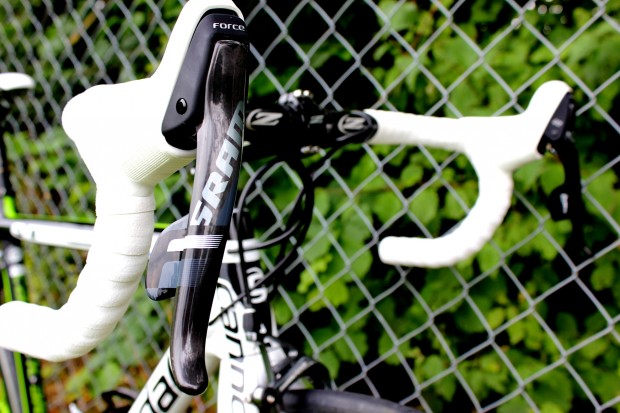
Our 45km test ride finished with a couple of long climbs that afforded opportunities to shift under load and from the outer chainring to the inner. The shift remained accurate, and free from slippage, even with the chain under full tension.
The most impressive aspect of the Force 22 dual control lever, however, for this correspondent at least, is the size and shape of the lever hood: another of the many features that Force 22 shares with its top-tier cousin.
The shape is compact and comfortable, and likely to gain the greatest appreciation from riders with small hands. We’ll be interested to see if this comfort is compromised by the very pronounced leading edge of the hydraulic rim brakes, with which our long-term test will be contested.
We’ll be conducting a long-term test on SRAM Force 22 in the months ahead. Check back soon for our first instalment.
Website: SRAM



